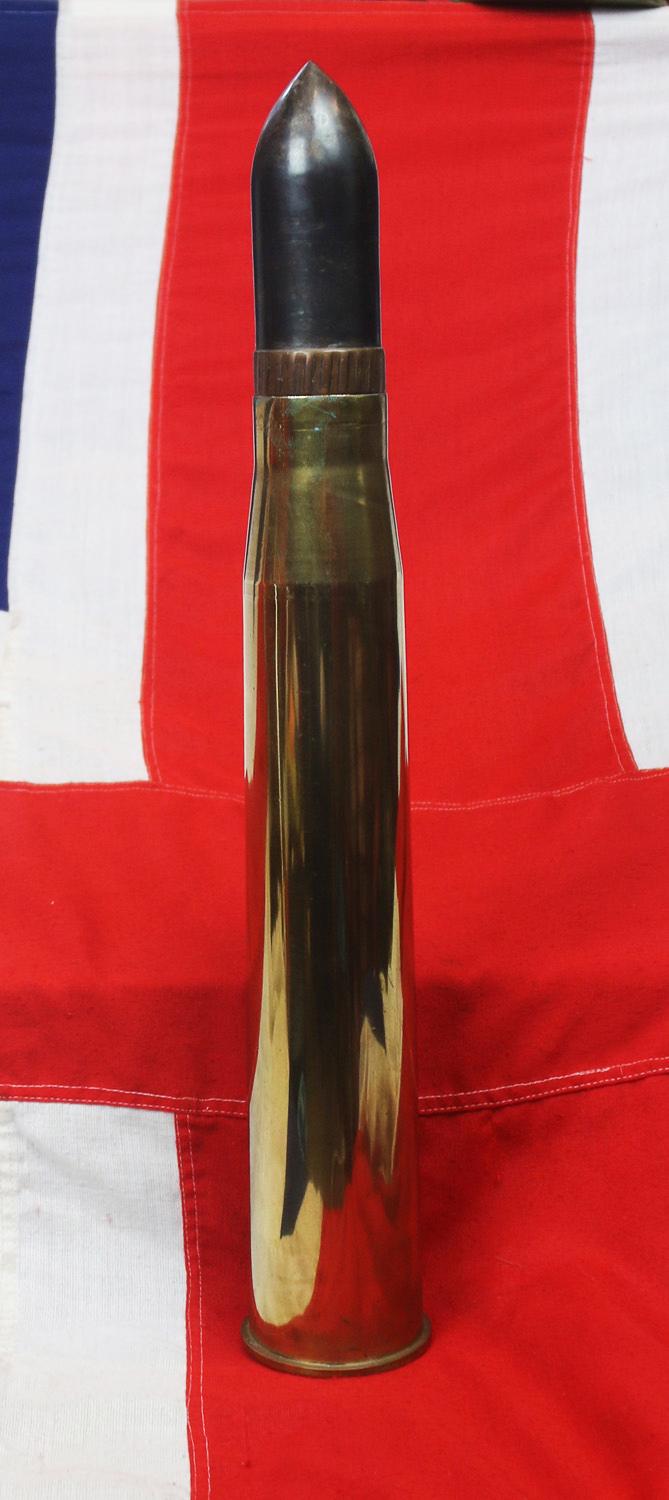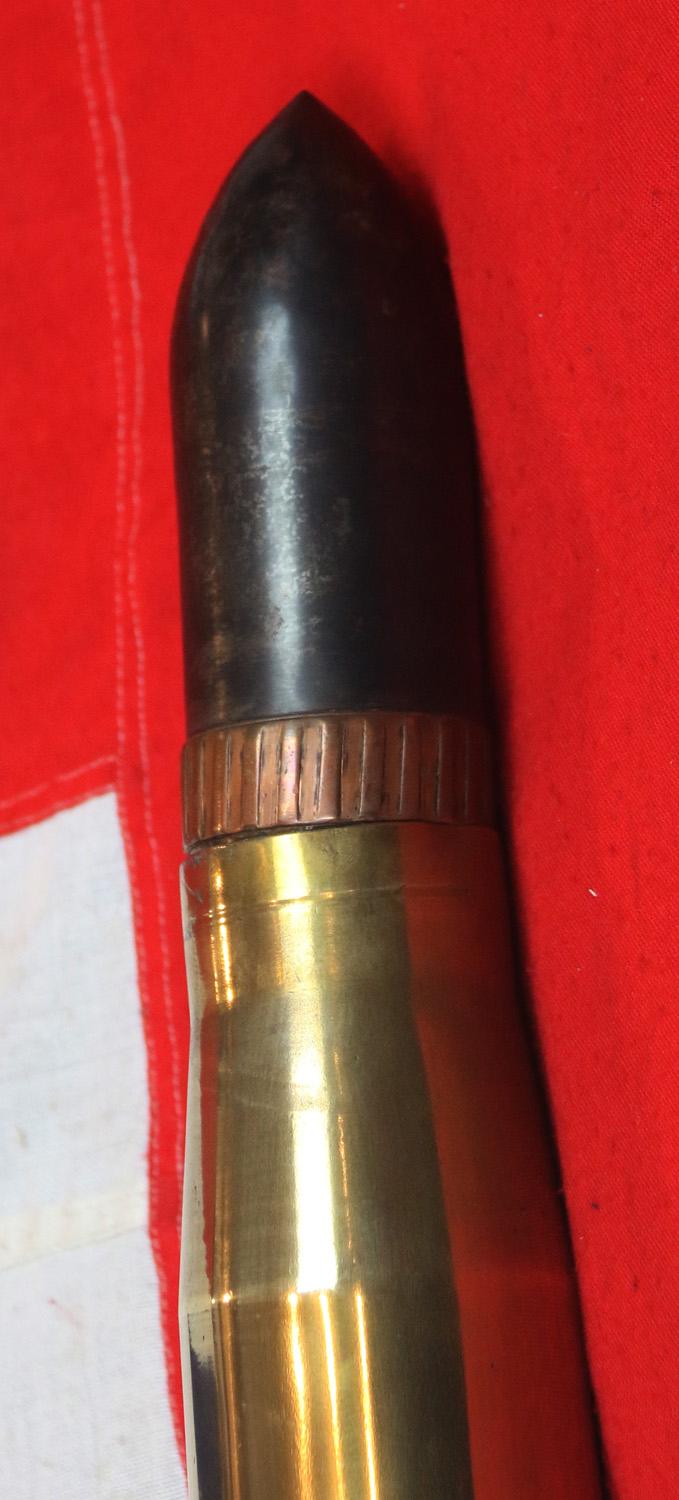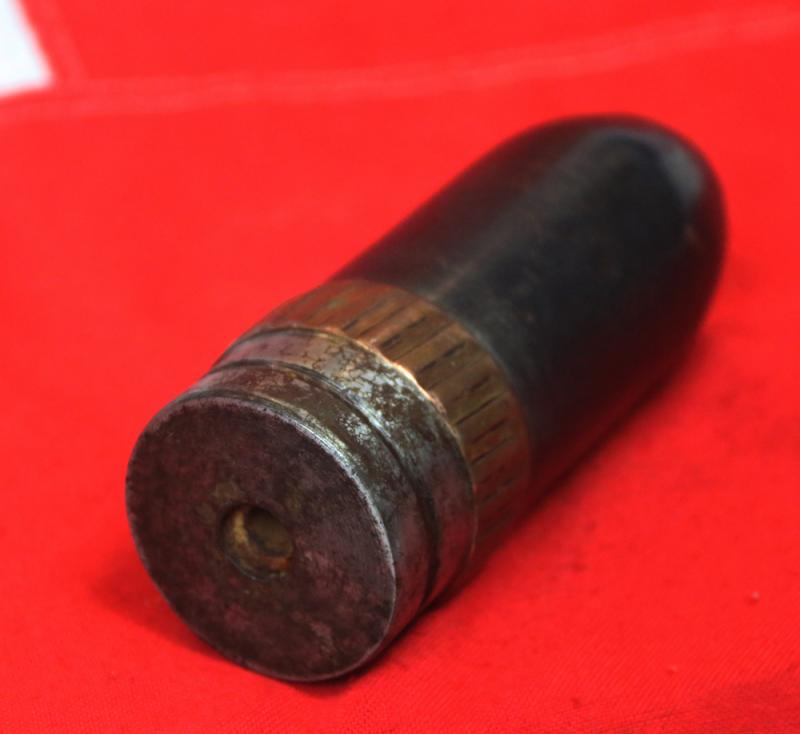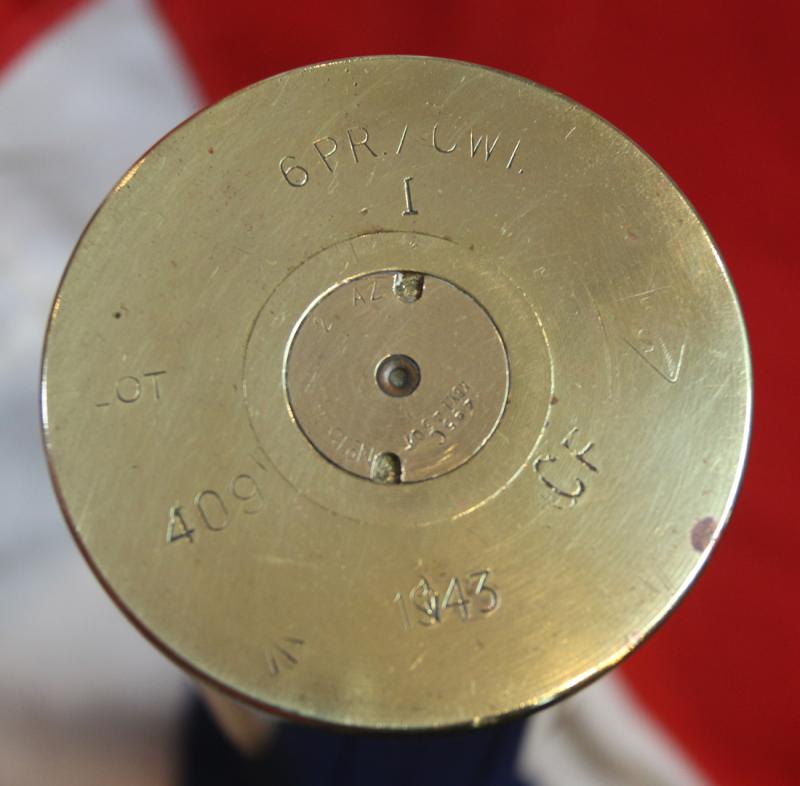An Original WW2 British 6 Pounder Tank Shell, Head and Brass Case
The six-pounder antitank gun was Great Britain’s premier tank killing weapon when it first appeared in the Western Desert, proving able to pierce the armour of any German tank the Afrika Korps could field. The technological arms race of World War II produced new tanks with ever thicker armour, however, and ultimately the six-pounder became ineffective well before war’s end. This obsolescence made little difference for many of the Allied soldiers who used it; since there was no comparable replacement that worked better, the cannon was still in wide use when the war ended.
The weapon the British Army eventually got was a marked improvement over its predecessor. The six-pounder Mk2 production model weighed in at 2,521 pounds, almost 800 pounds heavier than the two-pounder but still light enough for crews to manhandle it into position when necessary. It was mounted on a conventional two-wheeled carriage with “split” trails; that is, the two trailing arms that extended to the rear of the carriage could be separated to increase stability. The barrel on the six-pounder was 43-caliber, meaning the bore’s length was 43 times its diameter of 57mm. The weapon could traverse 45 degrees to either side and elevate from minus five to plus 15 degrees.
When firing the standard six-pound armour-piercing round, the six-pounder had a maximum range of 5,500 yards with a muzzle velocity of 2,693 feet per second and could penetrate 74mm of armour at 1,000 yards. Over time, improved ammunition was developed, culminating in June 1944 with an APDS (Armour Piercing Discarding Sabot) round that had a tungsten core. This increased penetration to 146mm at 1,000 yards. Tungsten was a valuable commodity in war production, so shortages meant there were never as many APDS rounds available as needed.
Photo in the gallery of a Panzer tank crew with tank rounds. Compare the shell on the left as roughly the size of the six pounder shell to their 88mm shell on the right
Inert, deactivated and completely safe
Code: 25218







